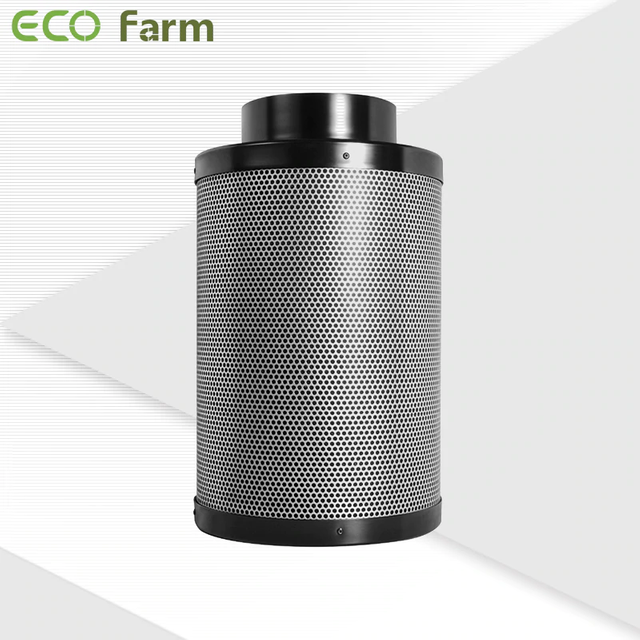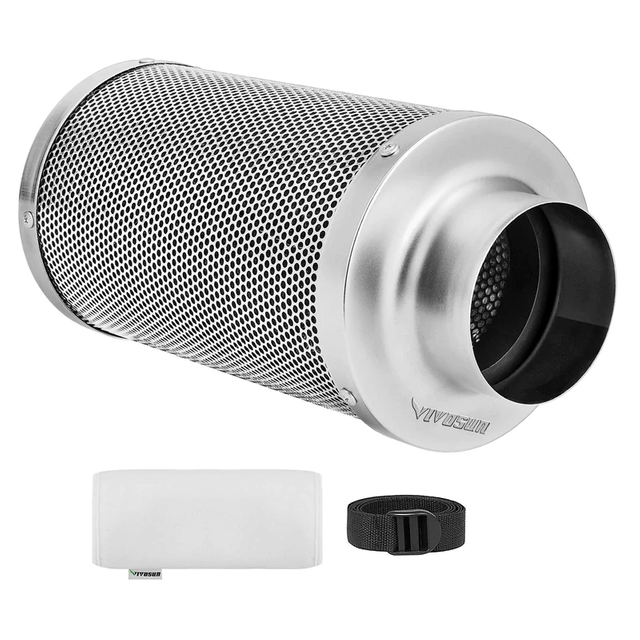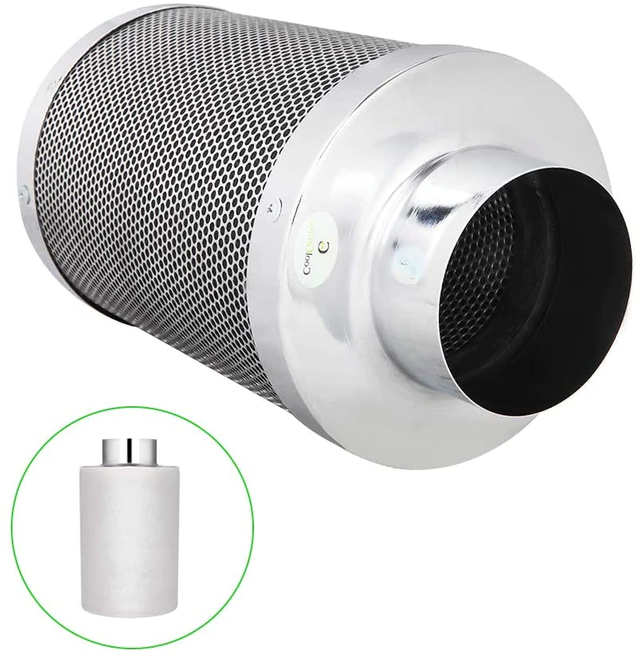If you own a grow tent, you know that it is imperative to clean the air coming from the growing area. With a good fan, you can push the chemical smells and different odors from your tent.
In any case, assuming you need to release perfect and odorless air from your grow room, you also know the importance of a carbon filter. The carbon filter is usually appended to the ducting system or in an inline fan.
It cleans your air. You will not see any odor coming from your grow room.
Tragically, carbon filters do not last forever. They get saturated after a point in time. Moreover, when they are saturated, you will smell all smells coming from your grow tent.
Along these lines, after some time, you need to replace your carbon filter. This is something you should know even before you set up a grow room.
That being said, you should put a carbon filter in the list of grow room activities.
In this article, we will talk about the best Carbon Filters for grow tents.
Let’s hop right onto it!
What is a Carbon Filter?
Like the name clearly suggests, a carbon filter (or activated charcoal carbon filter) is an air exhaust system for controlling odor or aroma of your growing plants. Sure, you may be enjoying the smell of your plants, but you wouldn’t want that odor to leak outside your grow room. Would you?
By definition, a carbon filter is an elongated tube encased with metal and whose inner part is lined with activated charcoal (aka carbon).
Odor filters are typically made out of porous materials, such as beds of activated carbon (charcoal) and polyester or any other spongy fibers.
If properly installed as part of an extraction system in an isolated space (such as grow room, grow tent, greenhouse, etc), a filter can serve multiple purposes.
First, it prevents the smell of your plants from leaking outside of your grow room. And secondly, it hinders the odor from extending out of the room and lurking around your home.
A air filter is considered the most effective method of controlling plants smells, and it never changes the smell of your plants.
How Does a Carbon Filter Work?
Carbon filters contain odors and decontaminate the air through a process called adsorption. The process of adsorption takes place when molecules latch onto the outside of a surface, as opposed to absorption when they’re soaked into it.
Like I mentioned, carbon filters use the activated carbon, whereby the more porous the carbon, the better the extraction. The filters inside are formed by chemically and thermally treating charcoals, and turning them into activated carbon.
Activated carbon contains millions of pores, which help extend the surface area to 2000–4000 m2 per gram. Smelly particles and volatile organic compounds (VOCs) are drawn onto its surface to ensure better odor management.
A highly porous carbon increases the amount of surface available for impurities to attach onto when contaminated air passes through the filter.
Activated carbon comes in the form of thin or thick packets for filtering the air. You’ll need to insert it into the main purifying unit, such as a HEPA air filter (most recommended) or an air purifier.
As contaminated air passes through the main filtration unit, the activated carbon inside the unit absorbs the impurities. The air exiting the unit comes out of the filter purified and clean.
It’s best to use the activated carbon in conjunction with a HEPA filter. That way, you can easily restrain larger particles like lint, pollen and dust from coming into contact with it. The HEPA filter provides better performance and lasts longer.

Features:
The ECO Farm carbon filter will soak up and eliminate some of the most undesirable odors and additional harmful and potentially ill-fating chemicals in the air. This carbon filter is made of high quality activated charcoal, delivering 100% filtered airflow. ECO Farm air carbon filter provides higher absorption and a longer life rating. Especially, it is designed in black-coloured style, the panel ventilation rate goes up to 53%, greatly reducing air volume loss and increasing efficiency. It can be used as an intake or exhaust filter, ideal for grow tents and hydroponics rooms, indoor planting tents, basements and kitchens.
VIVOSUN Air Carbon Filter for Grow Tent

Features:
VIVOSUN Air Carbon Filters are made of Virgin Australia Activated Carbon with high microporosity, designed to trap gas molecules and maintain adequate airflow in the ventilation equipment of hydroponic systems; 1050+ due to the optimal surface area of each carbon particle The RC 48 carbon captures 3 times more air pollutants than average. Porous Activated Carbon helps eliminate some of the most undesirable pungent odors and particulates in indoor grow tents and hydroponic grow rooms, preventing gaseous pollutants from entering your bathroom, basement and kitchen; it also absorbs emissions from pets, smoke, cooking The smell of oil smoke, etc.
Phresh Carbon Filter for Grow Tent

Features:
Phresh filters are state-of-the-art carbon filters that actually flush the air to remove dust, foreign matter, organic compounds and odors. Compared to the competition, Phresh carbon filters are half the weight, last twice as long, have the largest selection of sizes, and are competitively priced. Phresh filters rely on the unique properties of premium RC-48 activated carbon found only in Western Australia. These filters are currently used in research laboratories, plant breeding, tissue culture, indoor gardening, backyards and commercial greenhouses. Phresh Carbon Filters are professional grade systems designed to meet the needs of serious hobbyists and commercial applications.
Where to put carbon filter in grow room?
You should also make sure that the fan and carbon filter you choose can fit properly in your room. Look for those that will be able to extend outwards as far as possible (longer exhaust ducts) or upwards (taller fans). You want your carbon filters to fully cover all of the walls and other surfaces in the grow space so that no smells slip by them.
Step 1: Locate one end of the rubber hose on top of the fan and then place it about 4 inches below where you tapered off one end. Place another strip of tape across this end to hold it tightly against the hose. Make sure that just enough ventilation is still occurring through the cut area so that air can still escape but odors cannot come back through.
Step 2: Take the tape off of one end and stretch out the rest of the rubber hose so it is as long as possible (but make sure you can still fit it in your tent). Tape this end securely to seal any holes or cracks that might be letting air escape before it reaches the carbon filter.
Step 3: Find a way to attach one end of your ducting (if you haven’t already done so) and then attach the other end onto the carbon filter’s input/outlet port. Make sure not to tighten them too tightly together, just enough that they will stay firmly attached during use. You also want to leave a little bit of space between the carbon filters output and intake ports so that there isn’t any back pressure created.
Step 4: Finally, tape or screw the fan to the top of your grow tent so that it hangs at least 1–3 inches above your plant’s canopy level (tape is easier). Use quick ties around the legs of your carbon filter and then attach them to nearby objects for extra support. You can also use these quick ties to adjust how close or far away from the canopy the fans are sitting.
Conclusion
If you are looking for an established product that has been used and proven by lots of seasoned grow room users, the products above are your best choice. Even though their prices are a lot higher than other counterparts, it’s hard to deny that you have to pay extra for quality products these days.
They come with pre-filters, which enables it to last longer. As mentioned in the review above, it is sturdy and well-constructed such that you get a higher value for your money.